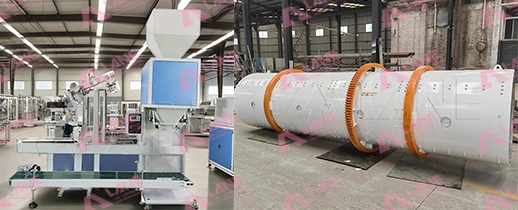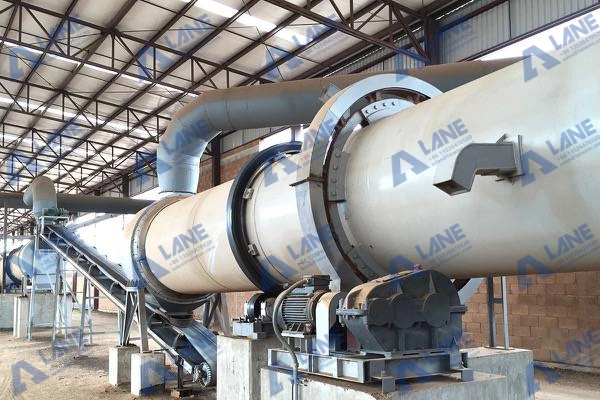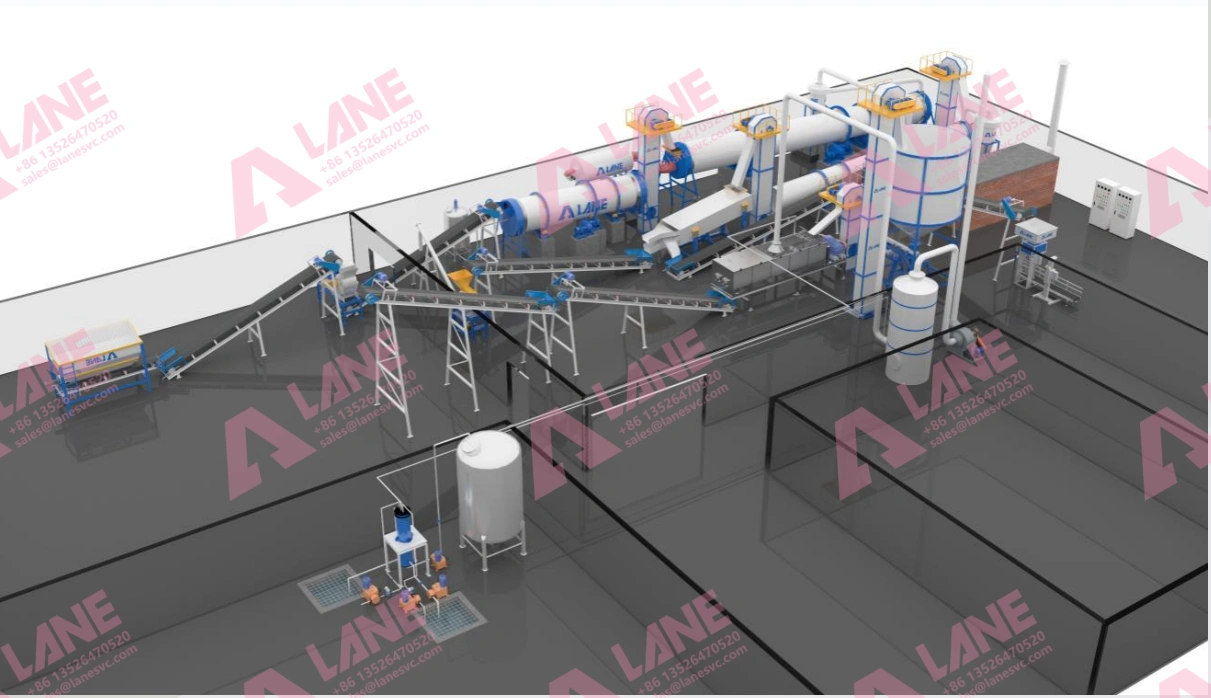How Granulators Work: A Complete Guide to Mechanisms and Operation
- 2025-10-28
From organic powders in fertilizer production to mineral-based materials in large-scale plants, raw materials are often difficult to handle, measure, and process. They can be dusty, uneven in particle size, and have inconsistent moisture or density, creating challenges for manufacturers seeking precision, efficiency, and uniform product quality. This guide will demystify the technology designed to overcome these challenges: the granulator. You will learn the fundamental principles behind how granulators work, from the mechanical forces that drive particle formation to the key components that determine granule size and strength.
By the end of this article, you will have a comprehensive understanding of the fertilizer granulation process, the main types of granulation methods, and how to assess product quality—helping you choose, operate, and maintain this essential equipment more effectively. The growing importance of this technology is evident in market trends: the global fertilizer granulator market was valued at approximately USD 2.5 billion in 2024 and is projected to reach USD 4.1 billion by 2034, driven by the rising demand for efficient and sustainable fertilizer production solutions.
Introduction: Transforming Powders into Precision Granules
What is a Granulator? Defining the Core Machine
A granulator is a key processing machine in fertilizer manufacturing, essential for understanding how granulators work to transform raw materials into uniform granules of specific size and shape. In fertilizer production, knowing how granulators work helps achieve size enlargement—binding fine organic or mineral powders into larger, denser, and more durable granules that improve handling, storage, and nutrient release. Granulators use mechanical forces such as rolling, extrusion, compaction, and impact, and learning how granulators work ensures uniform, free-flowing fertilizer granules with enhanced strength, stability, and nutrient distribution compared to raw powders.

The Essence of Granulation: Why Particle Transformation Matters
Granulation is the process of particle size enlargement or controlled size reduction and understanding how granulators work is essential for optimizing this transformation. This process is critical across industries because knowing how granulators work helps improve the physical characteristics of bulk solids. Fine powders often exhibit poor flowability, leading to inconsistent feeding into equipment like tablet presses, and may segregate, compromising uniformity. By learning how granulators work, manufacturers can produce granules that are more uniform, denser, and less prone to dust, ensuring smoother production, higher quality products, and a safer working environment.
The Fundamental Granulation Process: Agglomeration Principles
What is Agglomeration? The Journey from Powder to Granule
Agglomeration is the process by which fine fertilizer particles combine to form larger, multi-particle granules, and understanding how granulators work is key to achieving this transformation. This principle forms the foundation for most fertilizer granulation techniques, whether organic or inorganic, because knowing how granulators work ensures optimal particle adhesion and granule growth. Initially, raw materials are brought into close contact through mixing or tumbling. Then, binding forces—introduced by liquid binders, moisture, or pressure—cause the particles to adhere. Learning how granulators work allows these small agglomerates to collide and coalesce into strong, uniform granules ideal for handling, storage, and nutrient release.
Core Objectives: Why Granulate? Enhancing Material Properties
The decision to integrate a granulation process into a fertilizer production line is guided by specific objectives aimed at improving material handling, production efficiency, and final product quality.
Improving Flowability: Granulated fertilizer materials flow more smoothly and predictably through hoppers, conveyors, and spreaders compared to fine powders, ensuring uniform feeding and application in the field.
Increasing Bulk Density: Granulation increases the bulk density of fertilizer powders, allowing for greater material packing within storage or transport containers while reducing dust loss and logistics costs.
Preventing Segregation: By binding various nutrient components—such as nitrogen, phosphorus, and potassium—into uniform granules, granulation ensures consistent nutrient distribution in each batch of fertilizer.
Reducing Dust: Converting fine fertilizer particles into stable granules significantly reduces dust emissions, improving workplace safety, minimizing material loss, and ensuring compliance with environmental standards.
Enhancing Mechanical Strength: Granulated fertilizers possess higher mechanical durability, resisting breakage during handling and transport while maintaining product integrity and performance in the field.
The Two Primary Pathways: Wet vs. Dry Granulation
The granulation process is broadly categorized into two main methodologies, distinguished by the presence or absence of a liquid.
Wet Granulation: This is the most common method and involves the addition of a liquid binder solution to the powder mixture. The powder is agitated, allowing the liquid to distribute and form wet bridges between particles. These bridges hold the particles together, and upon drying, they solidify, creating stable granules.
Dry Granulation: This method is employed for materials that are sensitive to moisture or heat. Instead of a liquid, dry granulation uses mechanical pressure to force particles together. This is typically achieved through two techniques: slugging, where a large tablet (slug) is formed under high pressure and then milled, or through a roller compactor, which squeezes powder between two counter-rotating rolls to form a dense sheet or ribbon that is subsequently milled into granules.
Anatomy of a Granulator: Deconstructing the Core Components
Understanding how granulators work requires a closer look at their essential components. While designs vary based on the specific application and granulation method, most machines share a common set of core functional parts that work in concert to process materials.
The Feeding Hopper: Guiding Raw Materials to the Granulation Zone
The feeding hopper is the entry point for raw materials and understanding how granulators work begins here. Its design is critical for ensuring a consistent and controlled flow of powder or feedstock into the machine’s processing area. Hoppers are typically conical or pyramidal to promote gravity-driven flow and prevent bridging or arching, which can starve the system. For materials with poor flow characteristics, knowing how granulators work allows engineers to equip hoppers with agitators, vibrators, or screw feeders to maintain a steady, uninterrupted supply to the heart of the granulator.
The Heart of the Machine: Cutting Chambers and Mixing Vessels
The central processing area is where the material transformation occurs and understanding how granulators work is essential for optimizing this stage. In size-reduction granulators used for recycling, this is the cutting chamber. This robust chamber houses the rotor and blades, and its geometry is engineered to direct material efficiently into the cutting path. In agglomeration granulators, particularly high-shear mixers for wet granulation, this area is a mixing vessel or bowl. Knowing how granulators work ensures the vessel creates a turbulent vortex, providing rapid and homogenous mixing of powder and liquid binder. The shape of the bowl and placement of mixing tools are optimized so that all particles are uniformly wetted and agglomerated.
The Action Players: Blades, Rotors, and Impellers
These are the dynamic components that impart the necessary mechanical energy for granulation.
Blades and Rotors: In size-reduction granulators, a central rotor is fitted with multiple rotating blades. These blades work against a set of stationary bed knives mounted within the cutting chamber. As the rotor spins at high speed, it creates a scissor-like cutting action that shears the material into smaller pieces. The design, angle, and sharpness of the blades are critical for cutting efficiency and the quality of the resulting granules.
Impellers and Choppers: In wet granulation mixers, a main impeller rotates at the bottom of the mixing vessel. Its purpose is to mix the dry powders and distribute the liquid binder. A secondary, high-speed chopper blade is often mounted on the side of the vessel to break up any oversized wet lumps and refine the granules, ensuring a more uniform particle size distribution.
Shaping the Granules: Screens and Dies for Precision Sizing
Once the material has been processed, its final size must be controlled.
Screens: In size-reduction granulators, a perforated screen is located at the bottom of the cutting chamber. Material remains in the chamber and is continuously cut by the blades until it is small enough to pass through the holes in the screen. The hole diameter of the screen is the primary factor determining the final granule size. Swapping out screens with different hole sizes allows operators to easily adjust the output.
Dies and Rolls: In certain types of granulators, like pellet mills, material is extruded through a die with multiple holes to form densified pellets. In a roller compactor used for dry granulation, the “sizing” is done after the initial compaction step, where the compressed ribbon of material is milled through a screen to create the final granules.
The Discharge Area: Collecting the Finished Product
The discharge area is where the finished granules exit the machine and understanding how granulators work is essential for ensuring efficient product transfer. This is typically a chute or port located beneath the screen or milling head. Knowing how granulators work helps in designing this area so that the granulated product is collected cleanly in a container, bag, or conveyed directly to the next stage of the manufacturing process, such as a dryer (in wet granulation) or a tablet press. Proper design ensures smooth and efficient discharge of the final product without blockages or material loss.
Granule Characteristics: The Metrics of Quality
The success of a granulation process is not just about making larger particles; it’s about creating granules with specific, desirable characteristics. These properties are meticulously measured to ensure the final product meets quality standards and performs as expected in subsequent processing.
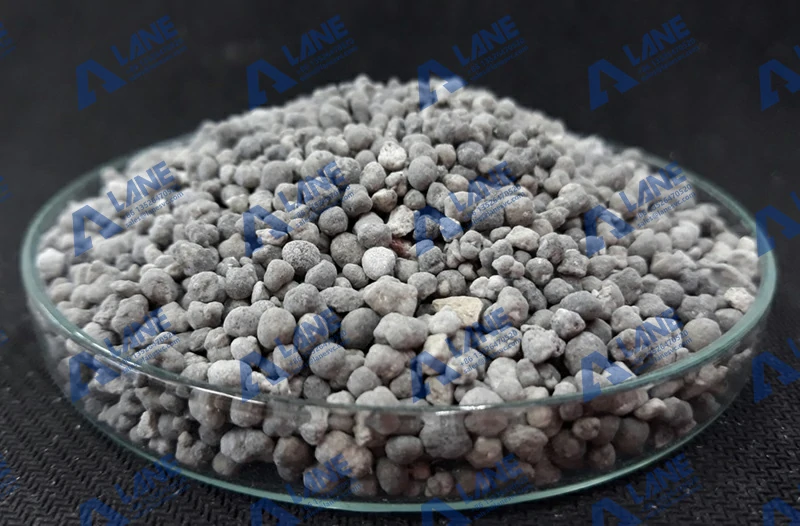
Particle Size Distribution (PSD):Particle Size Distribution (PSD) is a key indicator of fertilizer granule quality. A narrow, uniform PSD ensures smooth flow, consistent nutrient release, and efficient field application. Controlled by factors such as drum speed, binder rate, and screening precision, an optimized PSD enhances product uniformity, spreading performance, and nutrient utilization efficiency across different soil conditions.
Density and Porosity:Optimizing bulk density and porosity is essential in fertilizer granulation. Higher bulk density improves packing, storage, and transport efficiency, while porosity determines how moisture penetrates each granule, affecting nutrient dissolution and release rates. By balancing these properties, manufacturers can produce controlled-release fertilizers with enhanced nutrient efficiency, product stability, and overall performance.
Dissolution Behavior:In fertilizer production, understanding how granulators work is essential for controlling the dissolution rate—how quickly nutrients are released from granules into the soil. The physical and chemical characteristics of the granules, influenced by knowing how granulators work, have a direct impact on nutrient availability. Factors such as granule porosity, particle size distribution, surface coating, and binder composition determine how fast or slow nutrients dissolve under different soil conditions. Optimizing these parameters through a proper understanding of how granulators work allows manufacturers to control nutrient release profiles, improve fertilizer efficiency, and develop specialized products like controlled-release or slow-release fertilizers, enhancing crop yield and environmental sustainability.
Moisture Content: Moisture control is vital in fertilizer wet granulation. Granules must be dried to an optimal level—excess moisture causes caking and microbial growth, while overdrying leads to brittleness and dust formation. Maintaining precise residual moisture content ensures stable granule structure, smooth handling, and long-term product quality during storage and transport.
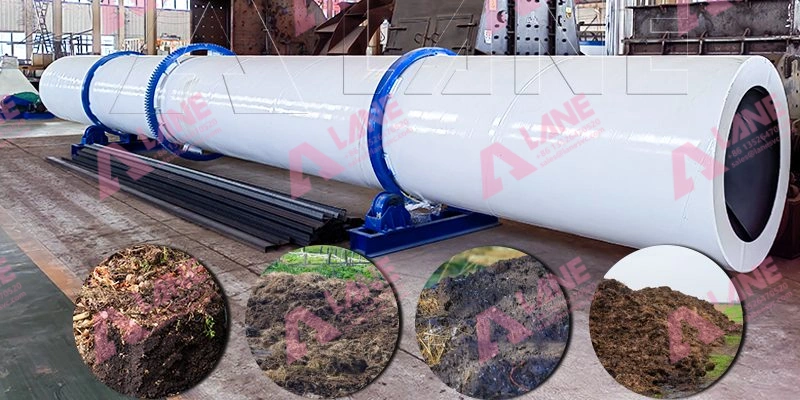
conclusion
Granulation is a vital process in fertilizer production, converting fine powders into uniform, durable granules that improve handling, storage, and application. By controlling feed rate, mixing, agglomeration, and drying, manufacturers can optimize particle size, density, and moisture for higher efficiency. Selecting the right granulation method and maintaining strict process control ensures consistent quality, reduces dust and breakage, and enhances product performance. For fertilizer producers, investing in advanced granulation equipment is key to achieving reliable, efficient, and sustainable production.

Identify your production needs
For more details, please feel free to contact us.
Henan Lane Heavy Industry Machinery Technology Co., Ltd.
Email: sales@lanesvc.com
Contact number: +86 13526470520
Whatsapp: +86 13526470520
